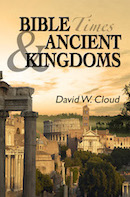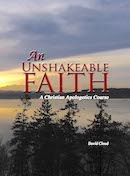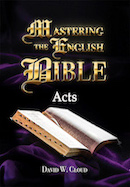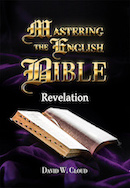866-295-4143, fbns@wayoflife.org
1. Tyre was a great city in ancient times. She was the chief city of the far-flung Phoenician Empire. Isaiah calls Tyre “the crowning city” (Isa. 23:8). Its antiquity was of ancient days (Isa. 23:7). It was built partly on the coast and partly on a rocky island standing some distance away in the Mediterranean sea.
2. Isaiah’s prophecy looks beyond the historical city of Tyre to Satan’s world kingdom which is motivated by covetousness and greed. Ezekiel 28:11-19 tells us that the “king of Tyre” is Satan. Babylon and Tyre represent different aspects of the satanic world system. Babylon represents the religious, idolatrous aspect, whereas Tyre represents the commercial aspect whereby men selfishly seek wealth, luxury, and comfort by any means.
3. Isaiah describes Tyre’s extensive commercial enterprises.
Her ships pass over the sea (Isa. 23:2).
She is replenished by the merchant ships of Zidon (Isa. 23:2). Zidon to the north was the other chief city of Phoenicia. Zidon’s merchants “pass over the sea,” meaning they traveled to the ends of the Mediterranean and beyond on trading ventures.
Tyre is the mart of nations (Isa. 23:3). The Phoenicians of Tyre and Sidon traded with Egypt and Africa and Israel to the south, Tarshish in western Europe, Javan, Tubal and Meshech in Armenia, Dedan and Sheba in southern Arabia, Asshur and other cities in Mesopotamia, Persia in the east, and beyond to India (Ezekiel 27). The Phoenicians were renowned for their craftsmanship and commerce. “The Phoenician cities consisted of large centres specializing in the manufacture of luxury and prestige articles destined for international trade and to satisfy the needs of a very restricted social elite in the east for prestige, authority, and dominion” (Maria Aubet, The Phoenicians and the West, p. 59). The prophet Ezekiel says that they traded in vessels of bright brass, gold, silver, iron, tin, lead, horses, mules, chariots and chariot ornaments, vessels of ivory and ebony, coral, emeralds, agates, and other precious stones, cloth of purple, blue, and fine linen with elaborate embroidery, wheat, honey, oil, balm, cassia, calamus, wine, white wool, lambs, goats, and cedar chests (Ezekiel 27)
Much of Tyre’s revenue came from trade in Egyptian grain (Isa. 23:3). “Sihor was in eastern Egypt (Jos. 13:3) and may be a branch of the Nile River. The grain of the Sihor referred to grain grown in the fertile land watered by that part of the Nile” (Bible Knowledge Commentary).
Tyre is supplied from Tarshish (Isa. 23:6). Tarshish, referring to Spain on the western end of the Mediterranean, was a great trading partner with Tyre, dealing in silver, iron, tin, and lead (Eze. 27:12). The tin was from England. The name “Brittania” means “the land of tin.”
Tyre’s merchants were princes and the honourable of the earth (Isa. 23:8).
4. Isaiah describes the fall of Tyre
In this section we will examine Isaiah 23:5-18 as well as Ezekiel 26 to get the full prophetic picture of Tyre.
Tyre’s trading partners were frightened at Tyre’s judgment (Isa. 23:1-3). Tarshish was probably in Spain and Chittim was the island of Cyprus. Sihor was in the Nile Valley at the entrance to Egypt and was a major exporter of grain (Jos. 13:3). These places represented Phoenicia’s far-flung commercial enterprise which extended in all directions and encompassed the entire Mediterranean region. These were “the honourable of the earth” (Isa. 23:8). They were the wealthy traders of the day, like the owners of international companies such as Apple, Microsoft, Nike, and Honda of our day. Tyre’s colonies and trading partners were pained at the loss of wealth (Isa. 23:5). The prophecy also looks ahead to the downfall of Satan’s commercial kingdom at the end of the age when the merchants of the earth will weep (Re. 18:9-11).
God’s judgment on ancient Tyre was because of her pride (Isa. 23:9). Pride was first found in Satan, and God hates it. Pride is self-centeredness rather than God-centeredness. It is giving the glory to the creature which belongs solely to the Creator. God has purposed to “stain the pride of all glory,” which ultimately will be accomplished in the Great Tribulation (Isa. 2:11; 5:15; 13:11). It is called the “day of the Lord” because in that day God will be exalted and man humbled. We see that God is in ultimate control of all historical events, and His purposes cannot be thwarted.
God’s judgment was also because of Tyre’s idolatry and moral wickedness whereby she enticed mankind. She is likened to a harlot (Isa. 23:15-16). This points to the end-time Babylon harlot that will rule with the antichrist and will blaspheme God (Re. 17:1-3). It points to the end-time global pop culture with its arrogance and rebellion against God’s holy laws. Observe that Tyre had “many songs” (Isa. 23:16). This reminds us of the role that sensual music plays in the immoral pop culture of these end times.
Tyre was taken captive for 70 years, then restored (Isa. 23:15-18). This refers either to Tyre’s subjugation by Assyria from 700 BC to 630 BC or to Nebuchadnezzar’s subjugation of Assyria. “Nebuchadnezzar besieged Tyre and partially destroyed it, carrying away many of its people into captivity. During the same seventy years in which Israel remained in captivity, the Phoenician city was in a state of degradation and collapse, but after the death of Nebuchadnezzar and, a few years later, the capture of Babylon by the Medes and Persians, Tyre was largely rebuilt, though it never again became the commercial city it had been. But it sought to establish intimate relations with various surrounding peoples in the effort to recoup its misfortunes” (Ironside).
An overview of Tyre’s destruction (Eze. 26:3-6)
Tyre’s downfall will be at the hand of many nations (Eze. 26:3). Tyre was attacked and overcome by the Assyrians, the Babylonians, the Greeks, the Syrians, the Romans, and finally the Muslims.
Tyre’s walls and towers were destroyed. This was done first by Nebuchadnezzar and then by Alexander.
Tyre’s dust was scraped and she became like the top of a rock. This was done when Alexander built a road out to the island.
Tyre became a place for the spreading of nets. The great mart of the nations eventually became a lowly fishing town. On a visit to Tyre in 1838, Andrew Bonar and R.M. M’Cheyne wrote, “Alexander the Great seems actually to have scraped away the very rubbish as well as the stones of Old Tyre to construct his causeway; and now the bare rocks along the shore, on some part of which the ancient city must have stood, are literally a place for the spreading of nets. The first man we met in the gate of Tyre was a fisherman carrying a load of fish” (Narrative of a Visit to the Holy Land, p. 262).
Tyre was a spoil to the nations. After her destruction by Alexander, Tyre was the vassal of whatever power happened to dominate the region.
Tyre’s daughters were slain by the sword. This refers to her satellite towns on the coast. They were destroyed by Nebuchadnezzar and again by Alexander.
Nebuchadnezzar’s assault on Tyre (Eze. 26:7-11)
Nebuchadnezzar brought a great army against Tyre (Eze. 26:7).
He destroyed Tyre’s satellite towns and villages on the coast (Eze. 26:8).
He besieged Tyre with mounts and engines of war (Eze. 26:8-9). Depictions of this type of warfare can be seen in the Lachish Room at the British Museum which displays Assyria’s siege of Lachish with mounts and battering rams. (For an illustrated study on this see the PowerPoint presentation on Assyria in Bible Times and Ancient Kingdoms, available from Way of Life Literature.)
He broke down Tyre’s towers (Eze. 26:9).
He entered the city with his war chariots and killed many of the people (Eze. 26:10-11).
But Nebuchadnezzar was not able to conquer the island fortress and gather Tyre’s wealth which had been shifted there before his assault on the coastal city. This is prophesied in Ezekiel 29:18-20. God gave Egypt’s treasures to Nebuchadnezzar as his wages, instead. “After the Babylonians had besieged Tyre for 13 years and were unable to take New Tyre, which was on the rock island, they went on to Egypt and in 568-567 B.C. conquered it” (“The Amazing Downfall of Tyre,” MidnightCall.com).
Alexander the Great’s assault on Tyre (Eze. 26:12-14)
In verse 12, the pronoun changes from “he” (Nebuchadnezzar) to “they” (Alexander’s army).
Alexander asked the Tyrians for permission to worship at the temple of Melqart, which he identified with the Greek god Hercules. They refused, believing that it was a ploy to gain entrance into the city. They felt secure with their navy and their walls. When Alexander made one final demand that they surrender, they killed his ambassadors and threw their bodies into the sea. That was a big mistake.
In an amazing feat of engineering and persistence, Alexander constructed a causeway from the shore to the island one kilometer long and 200 feet wide. In the process of building the causeway, Alexander used the material from the ruins of the city that Nebuchadnezzar had destroyed and literally swept the stones, timber, and dust into the sea, as Ezekiel had prophesied. Alexander led from the front as usual, spending much of his time on the causeway, encouraging and rewarding the workers.
As the causeway got nearer to the city, the Tyrians killed many soldiers and laborers with arrows and spears fired from the city walls and ships. To counter this, Alexander built the highest siege towers ever used in the history of war. Each one was 20 stories tall. They had wheels on which to travel across the causeway where they were used as artillery platforms with catapults and ballista to hurl missiles and large stones at the Tyrians. The towers were covered with rawhide and kept soaked with water to protect them from flaming arrows. They were also connected with a large rawhide screen to protect the causeway workers.
As a counter measure, the Tyrians made a fire ship from a horse transport filled with dried branches, pitch, and sulfur. Cauldrons of oil were hung from the masts. They weighed down the back of the ship to raise up the front and ran it onto the end of the causeway, burning up the towers and the siege equipment. Alexander ordered the project to continue.
Alexander was able to gain command of the sea around Tyre with a fleet of 225 ships, including those that had defected from the Persians. He mounted siege equipment and battering rams on some of the ships. The Tyrians poured red-hot sand over the walls onto the besieging ships, setting some on fire and burning the soldiers.
Alexander finally gained access to the south part of the city walls and personally led his army into the city.
Alexander killed 8,000 Tyrians, crucifying 2,000 on the beach. He sold 30,000 into slavery, including women and children. Previously, Tyre had sold Jews as slaves to the Grecians; now the Grecians enslaved the people of Tyre (Joel 3:4-6).
5. The prophet describes the restoration of Tyre in the end times and her association with Christ’s kingdom (Isa. 23:18).
Tyre will be one of nations that will supply merchandise to glorify Christ’s headquarters in Jerusalem. Compare Isaiah 60:5-7; Psalm 45:12; 72:10.
Note that “her merchandise and her hire shall be holiness to the Lord.” All commercial dealings from top to bottom will be just and righteous and compassionate in Christ’s kingdom and will no longer be based on selfishness, covetousness, greed, and dishonesty, as in this present world. “It is evident that the last verse of our chapter, like so many other prophetic scriptures, carries us beyond the present age to the establishment of the Messianic kingdom of our Lord Jesus Christ. In that day a new city will be raised up on the ruins of Tyre and will be subject to Him whose right it is to reign, and will bring her glory and honor to His feet. This is predicted both here and in Psalm 45:12 where we see Israel, once more recognized as the wife of Jehovah, and the daughter of Tyre among those who rejoice in her blessing and bring their gifts to the king” (Ironside).
- Receive these reports by email
- www.wayoflife.org
______________________
Sharing Policy: Much of our material is available for free, such as the hundreds of articles at the Way of Life web site. Other items we sell to help fund our expensive literature and foreign church planting ministries. Way of Life's content falls into two categories: sharable and non-sharable. Things that we encourage you to share include the audio sermons, O Timothy magazine, FBIS articles, and the free eVideos and free eBooks. You are welcome to make copies of these at your own expense and share them with friends and family. You may also post parts of reports and/or entire reports to websites, blogs, etc as long as you give proper credit (citation). A link to the original report is very much appreciated as the reports are frequently updated and/or expanded. Things we do not want copied and distributed are "Store" items like the Fundamental Baptist Digital Library, print editions of our books, electronic editions of the books that we sell, the videos that we sell, etc. The items have taken years to produce at enormous expense in time and money, and we use the income from sales to help fund the ministry. We trust that your Christian honesty will preserve the integrity of this policy. "For the scripture saith, Thou shalt not muzzle the ox that treadeth out the corn. And, The labourer is worthy of his reward" (1 Timothy 5:18). Questions? support@wayoflife.org
Goal:Distributed by Way of Life Literature Inc., the Fundamental Baptist Information Service is an e-mail posting for Bible-believing Christians. Established in 1974, Way of Life Literature is a fundamental Baptist preaching and publishing ministry based in Bethel Baptist Church, London, Ontario, of which Wilbert Unger is the founding Pastor. Brother Cloud lives in South Asia where he has been a church planting missionary since 1979. Our primary goal with the FBIS is to provide material to assist preachers in the edification and protection of the churches.
Offering: Offerings are welcome if you care to make one. If you have been helped and/or blessed by our material offerings can be mailed or made online with with Visa, Mastercard, Discover, or Paypal. For information see: www.wayoflife.org/about/makeanoffering.html.





